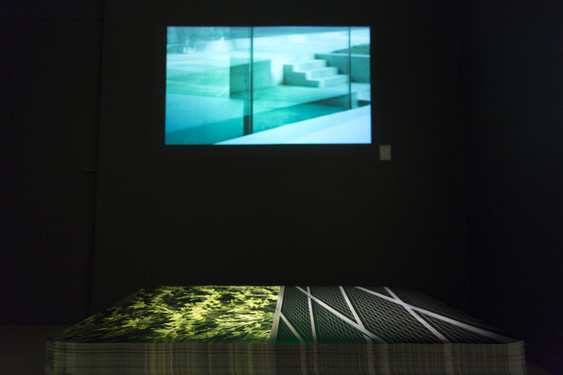-
PostsPublication date
04/01/16
Author(s)
Valéry Didelon
Bibliographic reference
D'architectures, n°241 déc. / janv. 2016, Dossier Wallonie-Bruxelles
website
www.darchitectures.com/da-numero-241.html entrer: five architectures in Belgium
 Exhibition entrer:© Vinciane Verguethen
Exhibition entrer:© Vinciane VerguethenThe architecture of Wallonia and Brussels is attracting more and more attention outside the borders of the kingdom of Belgium. This became clear once again this autumn with an exhibition, a catalogue and a series of meetings and conferences in Paris.
Barring the use of rarely convincing facsimiles, architecture itself cannot be exhibited. It can be visited, but cannot be brought within the walls of the institutions in charge of its dissemination and promotion. And yet Wallonie-Bruxelles Architectures (WBA) and the Centre Wallonie-Bruxelles in Paris are currently inviting us to enter into five recently completed projects in Belgium: a sports facility in Spa, a former converted dairy in Dison, a restored chapel in Mons, a footbridge in Brussels and an art pavilion in Renaix. In this case, it is the curator of the exhibition, Audrey Contesse, who took on the challenge of conveying to us the spaces and atmospheres that characterise these handful of buildings and public spaces chosen by her. For this, she turns the visitors into detectives by providing them with several clues of various kinds: objects collected on construction sites or in finished buildings, graphic documents from the design process, short videos and audio recordings made on site.
Paradoxically, this very fragmentary representation produces a remarkable effect of presence, perhaps because by deliberately limiting the information, the more the public pays attention and therefore becomes immersed in their surroundings.
SITUATIONAL INTELLIGENCE
The former editor of the magazine A + architecture invites us in actual fact to an exhibition about architecture rather than about architects. Responding to a call for tenders launched by WBA, she showcases five projects through which much more is discovered than the talent of a handful of prime contractors.
She thus allows us to understand the complexity and richness of projects that reveal, transversely if not exhaustively, the production conditions of the architectural and urban space in today's Belgium. While ambitious, the idea is perfectly accessible to the general public; the accompanying texts and captions of the documents are in fact devoid of the jargon that often condemns construction professionals to mingle among themselves.
The value of the work of the architects involved – Atelier Gigogne + L'Escaut, Baukunst, Baumans-Deffet, MSA + Ney & Partners and Vers.A – is appreciated in terms of their intelligent approach to situations rather than in terms of their creativity.
Modest in size and put together with limited resources, this exhibition therefore seduces through its assumed subjectivity, through its admittedly partial yet demanding perspective, through its empathy that is devoid of complacency. The accompanying catalogue is less compelling, as the projects are difficult to understand for the reader because of allusive nature of the iconography – the photographic tracking shots by Maxime Delvaux are less successful than his videos in the exhibition. It is missing drawings that would make it easier to follow the arguments of the authors invited to talk about the different projects. Interviews conducted by Audrey Contesse with the architects are on the other hand very illuminating.By Valéry Didelon

Wallonie-Bruxelles Architectures est une agence de promotion
culturelle et économique des architectes de Bruxelles et
de Wallonie sur la scène internationale.
Home  Posts
Posts  entrer: five architectures in Belgium
entrer: five architectures in Belgium
